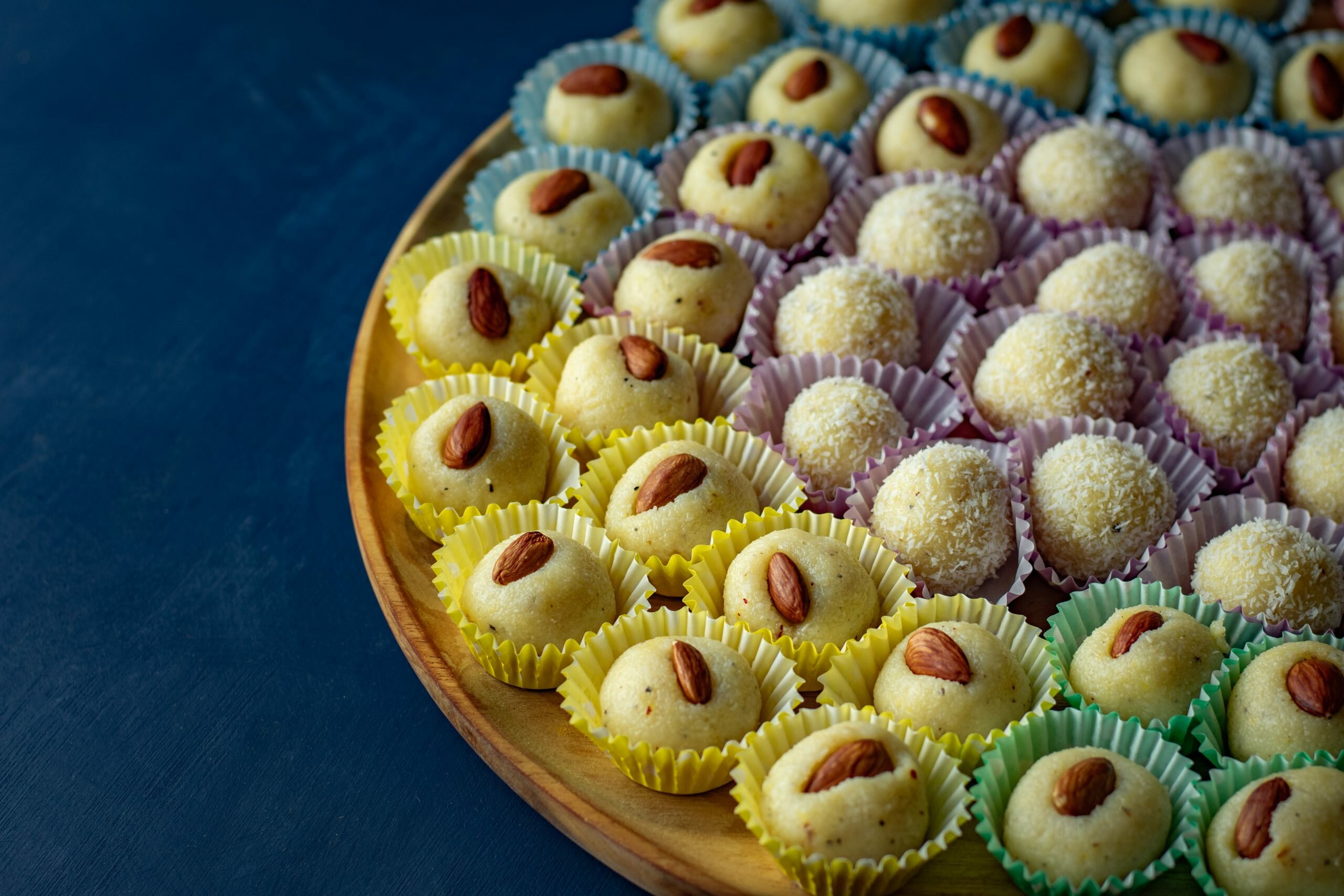
Desserts and sweets are an integral part of South Asian culture. Some of the popular desserts are kheer, halwa, zarda, ras-malai, shahi-tukda and kulfi. Dessert is a part of daily culture for many South Asians families. And sometimes a meal is not considered complete without it. Often there are no fixed dessert recipes and sugar is added according to the taste and likes of the family.
On the other hand, Mithai is more of a celebratory sweet. Not only is it eaten on Eid, Diwali, Holi, Raksha Bandhan but also at weddings, birthdays, baby births or passing exams. Traditionally, on these events, boxes of mithai are distributed among family and friends. Mithai is a broad category with hundreds of types, the most popular ones being laddu, barfi, gulab jamun, jalebi and besan.
We love having all these desserts but most of the time we are eating way more than we should.
The NHS Guidance are:
- 19 g for children aged 4-6
- 24 g for children aged 7-10
- 30g for adults
Just to put it into perspective 2 Gulab jamun will have approximately 30.5 g of sugar!
So, what do you think? Are you having more sugar than you should be having?
Are your drinks too sweet?
Through my consultations I have also observed a growing culture of soft drink consumption with meals. This is something which should be completely discouraged especially amongst the younger generations.
There are some very common traditional high sugar drinks like meethi lassi , shiknajabeen , doodh putti , rabri doodh , falooda and dood soda. All of them can have between 12- 30 g sugar in one glass .
How Much Sugar is in Your Favourite Dessert or Drink?
|
Dessert/Drink |
Sugar (gms) |
|
Laddu |
15 |
|
Barfi |
20 |
|
Jalebi |
20-25 |
|
Shikanjabeen |
18 |
|
Doodh Patti |
6-24 |
|
Rabri Doodh |
24 |
|
Falooda |
24-30 |
|
Doodh Soda |
20 |
*Approximation of sugars
Top Tips for reducing sugar intake
- Plan beforehand and decide on what treat you will have in a day.
- Whatever sweet treat you plan to have, the most important thing is to watch your portion. Rather than having 3 Gulab jamuns, have 1.
- Reduce the amount of sugar in your drinks or cut back on drinks with high sugar content.
- Rather than having desserts every day, limit intake to a few days.
- Opt for fruit-based desserts such as fruit chaat and lab -e – Shireen
- Swap some of the sugar in your desserts and chutneys with soft dates.
- Swapping your desserts with a piece of fruit. If fruit doesn’t satisfy your sweet tooth opting for dried fruit such dates, dried figs or mulberries as they are extremely sweet.
- It’s absolutely fine to use sweeteners. There are some sweeteners suitable for cooking/baking. There is a lot of bad press about sweeteners though they are absolutely safe to use.
We must remember that having sugar is more than health and nutrition. It provides us comfort and eating together with our family is something which we enjoy and cherish. Cutting out sugar should never be an option. The problem is not with the sugar, but the problem is the amount we tend to have.
Adding the desserts mentioned, to your diet on a daily basis would mean people going way over the recommended 30g of sugar a day. To reduce sugar intake the focus should be on sugar awareness among South Asians and promotion of healthier food swaps and recipes.


